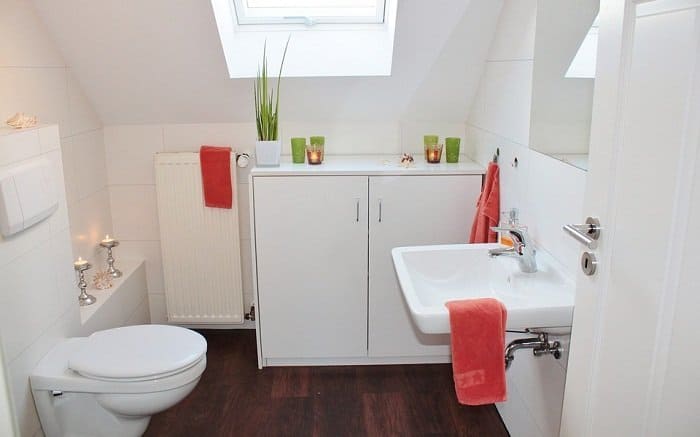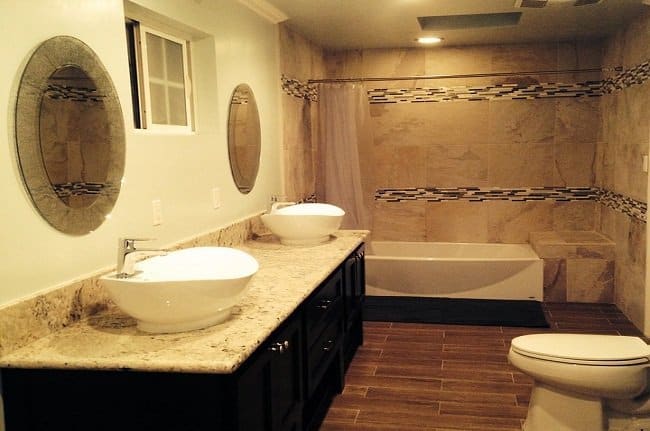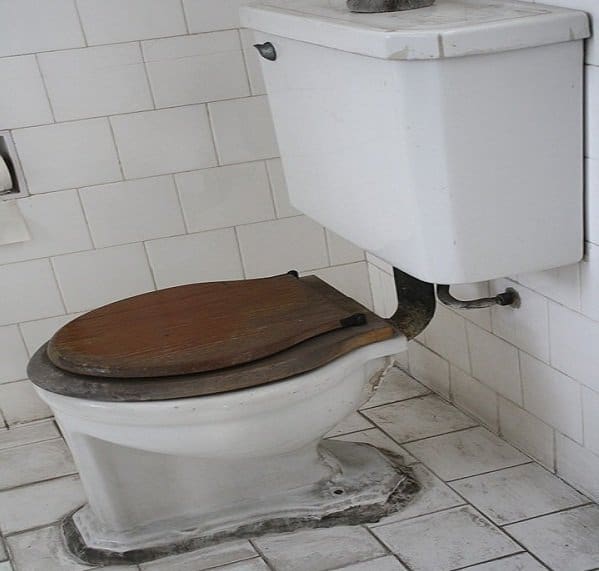On average, toilets can last for up to 50 years under normal conditions. However, the exact lifespan of your toilet system will depend on numerous factors such as the material it’s made of, the number of people using it, and how well it’s maintained throughout its lifespan. So, if you’re asking how long do toilets last, think of it as your regular vehicle.
Regular Maintenance Determines Your Toilet’s Lifespan
If you drive your car more often and share it with other members of your family or friends, it’s more likely to wear down faster. It will require more maintenance, repairs, and regular cleaning, which degrades it even faster.
Similarly, a toilet that is shared by many people will be flushed more times, making it more susceptible to damage, clogging, and cracking, which reduces its lifespan.
The longevity of your toilet may be further compounded by the weight of the person or people using it. Heavier people often cause more strain and damage to toilets, and larger bowel movements can cause more blockages and strain plumbing systems.
So, while a toilet can last as long as 50 years, most bowls will require replacement by around 20-30 years to ensure maximum safety and efficiency.

How Old Is the Average Toilet?
Unless you ha a home built before 1994 and has never undergone any renovation, most toilets are aged 27 years and below. This is because of the Energy Policy Act of 1992, which was proposed by the federal government and implemented in 1994.
Around that time, manufacturers made toilets that could consume as much as 16 gallons of water per flush. That was a huge problem for municipal and sewer systems, as well as homeowner and commercial building owners.
The legislation required all toilet manufacturers to produce standardized models that consume 1.6 gallons per flush or less to conserve water and ease the burden on sewer systems. So, any building constructed after 1994 will typically include these new toilets.
Newer Toilets Tend to Be More Water-Efficient
Toilet manufacturers have made impressive improvements over the past 30 years by designing toilets that use less water per flush. They are also more efficient in getting rid of solid waste with fewer flushes, saving money and the environment at the same time.
Many modern toilet models also incorporate dual-flush technology, allowing you to use less water when flushing liquid waste (urine) and more water when flushing solid waste (poop).
Therefore, if your current toilet is more than 20 or 30 years old, it may be time to consider getting a new water-efficient model.

When to Replace a Toilet
Even if your current toilet still looks nice and polished, if it’s more than three decades old, you may still consider replacing it with a more water-efficient model. But generally, here are the signs that your toilet is due for replacement:
1: Old Age
An old toilet nearing the end of its lifespan will develop issues every now and then. It may be covered with stains, rust, and corrosion, or it may fail and refuse to flush. While some repairs can help salvage the situation, you will end up spending huge sums of money on plumber costs. It’s best to just replace an old toilet with a newer, more efficient model.
2: Flushing Problems
When you flush your toilet and it refuses to do the job, the first point to start is to involve the services of an experienced plumber to fix the mechanism causing the trouble. But if several repair attempts don’t seem to solve the problem, you may need to invest in a new toilet system.
3: Developing Cracks
Porcelain toilet bowls are designed to be sturdy and resistant to wear, tear, weight, and regular use. If cracks begin to appear along the sides and edges of your toilet bowl, a replacement needs to come soon.
If you choose to postpone the replacement, the toilet bowl is likely to break apart while someone is sitting on it, which is an embarrassing way to get injured. Cracks can also trigger leaks, and no one wants to walk into a flooded bathroom.
4: A leaking Toilet Bowl
A leaking toilet bowl will form a puddle of water on your bathroom floor, around the bowl. If you clean the puddle and it reappears later, then your toilet may have a crack. To be certain, pour some dyed water inside the toilet bowl and let it settle for some time.
If you see the coloration on the floor later, then your bowl certainly has a crack and needs to be replaced. When left unresolved, that continuous leak will trigger mold growth in your bathroom and cause floor damage.
5: Frequent Toilet Repairs
If you find yourself calling a plumber every few weeks to work on your faulty toilet, then you might be better off investing in a new unit. The repair expenses might quickly build up and surpass the cost of a new toilet system.
Also, if your toilet requires massive repairs whose cumulative costs are too expensive, it could be more cost-effective to get a new, efficient model.
6: Frequent Clogs
Clogged toilets can be annoying. If they’re happening multiple times a week, you will find it tedious and frustrating plunging the mess every now and then.
Although some clogs are caused by someone flushing something rough down the toilet, if the overflow seems frequent enough, then there’s a real problem. In most cases, the parts of the toilet that handle the flushing process are likely worn out, and you may need to replace the toilet.
7: A Wobbling Toilet
When sitting on your toilet, the entire toilet system should remain stable and comfortable. Excessive wobbling and rocking are signs of a faulty system. You can have your plumber come over and fix it by tightening a few bolts, or you could even do it yourself.
But if the wobbling continues even after tightening the anchoring bolts, then there might be a bigger underlying issue. Probably the floor underneath has rotten due to a consistent water leak. In such a case, it might force you to have the floor fixed before fixing a new toilet system.
8: Problems Refilling the Tank
When you flush your toilet and the reserve tank refuses to refill, then there could be a problem with the fill valve. Any plumber should help you replace the valve with no issues, especially if it’s a two-piece toilet.
Some one-piece toilet models have the tank and the bowl attached together in a compact unit, meaning that accessing the valve and replacing it requires some skills and expertise.
Regardless of your toilet model, if the problem persists even after replacing the valve, then it could be more cost-effective to get a new toilet.
9: Visible Rust and Corrosion
An aging toilet can develop rust and corrosion on the bowl. Although you can use some cleaning products to get rid of light stains, extensive corrosion and rust may call for a complete replacement.

10: Water Running Continuously
Sometimes, water can continue running down the toilet even before you flush it. If that’s the case with your toilet, try lifting up the lid and jostling the flapper valve.
If that doesn’t solve the problem, you’ll need to call a plumber to look at it. Depending on the cause of the issue, your plumber may recommend replacing the toilet system.
11: Damage on the Outer Surface
Sometimes it might just make sense to replace your old toilet system for cosmetic reasons. Nobody wants to endure a toilet tainted with unsightly scratches and corrosion that aren’t going away even after rigorous cleaning.
How Long Do Toilets Last with Regular Maintenance?
While the toilet bowl itself could last for up to five decades, various mechanical components within it may require servicing and replacement every few years. An experienced plumber should be able to help you replace parts such as flappers, valves, lever arms, the toilet seat, etc. to ensure your toilet functions efficiently for several years to come.
If you’re an ardent DIYer, you can carry out most of these maintenance works yourself and only call a plumber when major components break down.
What to Look For in a New Toilet
Once you’ve made up your mind to replace your old toilet, it’s time to think about what features to look for. Naturally, you’ll pick something that suits your personal style, be it modern, utilitarian, stylish, vintage, or even brightly colored blue, pink, or green to match your bathroom wall décor.
Next, consider the capacity of your plumbing system and the size of your bathroom. Measure the old toilet’s bowl height, width, and length, as well as the distance between the wall and the central bolts holding the base of the toilet in place.
Also, consider how tall and wide the tank is and the amount of water it can hold. More importantly, choose a toilet that consumes fewer gallons per flush without compromising the performance.
Today, you can find greener, low-flow, and more environmentally friendly bowls that only consume 1.3 gallons per flush, but some models tend to be ineffective in eliminating waste in a single flush.
Depending on what you feel comfortable using, we often recommend the WOODBRIDGE T-One Piece Dual Flush Toilet that uses 1.0 /1.6 GPF.
The American Standard Dual Flush Elongated Toilet that consumes just 0.92/1.28 GPF also works great, especially if you prefer a two-piece toilet model.
Final Words
Overall, a toilet is a critical fixture in any home and should be given the attention it truly deserves. How long your toilet lasts will hugely depend on how well you take care of the unit through regular cleaning and maintenance.
Overall, you can expect your new toilet to last for up to 50 years. However, if it’s used by multiple people or receives less than ideal water pressure, it can wear down quicker and require replacement after 20-30 years.
